The Road to Elk Hunting Success
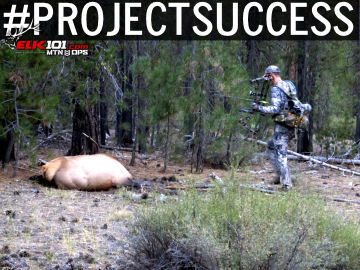
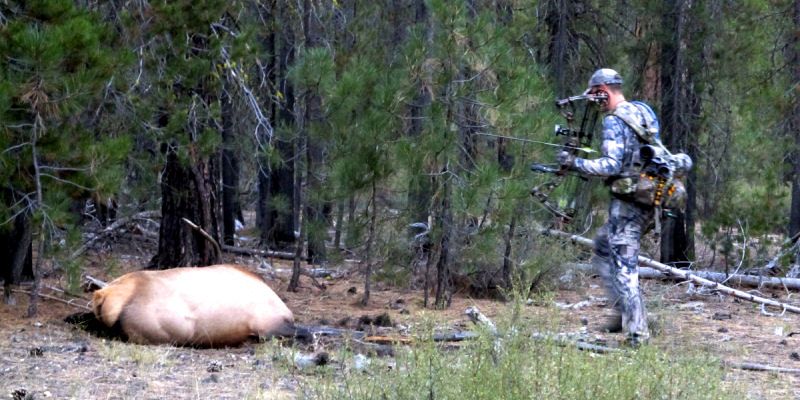
This article was sent in by a guest contributor, Clint Radford. Clint’s passion for learning and becoming more successful is contagious, and his story is a great example of what perseverance, dedication, and knowledge can do to increase confidence and success in the elk woods.
The Road to Elk Hunting Success
By guest contributor, Clint Radford
Cutting your teeth in the public land elk woods can be an extremely humbling and frustrating experience. My hunting partner and I know all too well how steep the learning curve can be. We spent our first four seasons in Oregon chasing elk with a bow without punching a tag. “Tag soup” is a bitter dish no matter how it’s prepared. After four unsuccessful seasons, we got serious and finally got an elk in 2011. During the next 4 seasons, we punched 6 tags between the two of us in OTC public land units.
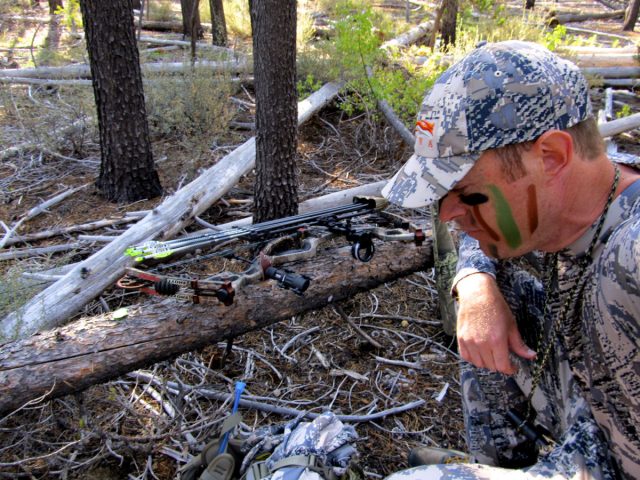 By no means am I claiming that we have got this thing on lock down. I’ll be the first to admit we have a LOT to learn. But as I’ve looked back over that 8 year span, I’ve noticed a few things that I feel helped us get over the hump. There are lots of strategies out there, and each one of us has a different formula for getting it done in the mountains. What worked for us might be a bit different than other people, but here is what I see as the 4 main things that helped us get on the road to elk hunting success.
By no means am I claiming that we have got this thing on lock down. I’ll be the first to admit we have a LOT to learn. But as I’ve looked back over that 8 year span, I’ve noticed a few things that I feel helped us get over the hump. There are lots of strategies out there, and each one of us has a different formula for getting it done in the mountains. What worked for us might be a bit different than other people, but here is what I see as the 4 main things that helped us get on the road to elk hunting success.
Attitude
I am a school teacher, and on the wall in my classroom I have a banner that reads, “Attitude is a little thing that makes a BIG difference”. Attitude was a major thing that changed for us. The first four seasons we were content getting encounters with elk; any elk. Maybe for me, this contentment came from my years of chasing elk during Oregon’s Cascade general rifle hunt when going all season without even seeing an elk was not uncommon. When I picked up a bow, we messed things up over and over, and continually over-analyzed what we were doing wrong. We often focused on our mistakes and got discouraged easily.
The year we got our first archery bull, things clicked even before we hit the mountains. Before season even started, we became determined to not settle for being ‘happy’ just seeing elk. We wanted success. We prepared to be successful. We started changing our talks from “if” we get an elk to “when” we get an elk. We bought the necessary equipment. We purchased larger coolers, lightweight game bags, and even a nicer camera for our “hero” shots. Before we even set foot in the elk woods that year, we were prepared mentally and outfitted with the correct equipment. We expected to be successful.
Once season started, we were more focused in the woods as well. We kept at it. Our attitudes changed from being afraid to fail, to pushing harder each time we didn’t succeed. When we’d blow a setup or the wind would switch and a bull would bolt, we would regroup. I came up with a saying for us that seemed to stick, “It only takes one!”…one setup to go right, one bull to commit, one arrow to fly true. There wasn’t any sense in dwelling on the things that went wrong. We gradually built more confidence and stopped getting hung-up on our “failures” or just being content with seeing animals.
Calling
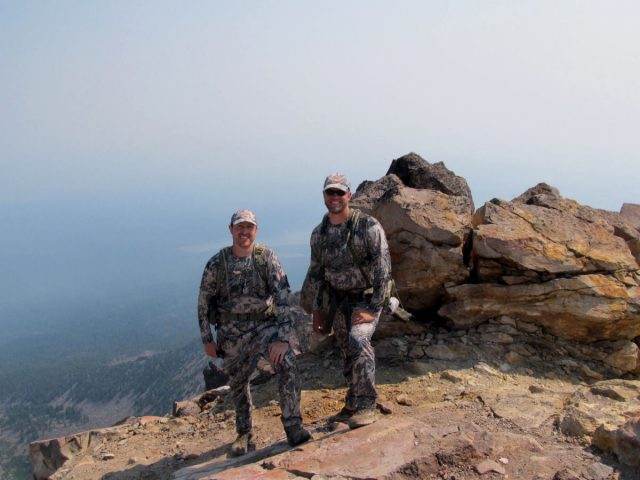 During the first four seasons my hunting partner, Jeremy, and I hunted together, he was the only one that could call. This wasn’t a selfish thing on my part; I just didn’t know how to call and he seemed to enjoy it. I was a rifle elk hunter prior to this and didn’t put any thought into calling. Within a month after the end of our fourth season with no elk on the ground, I bought my first diaphragm and committed myself to figure out how to use it. I bought 3 different CD’S on calling and watched any YouTube videos I could. During the off season that year, I was a man on a mission. This wasn’t a guarantee for success by any means, but I dedicated time to learn how to make the basic elk sounds.
During the first four seasons my hunting partner, Jeremy, and I hunted together, he was the only one that could call. This wasn’t a selfish thing on my part; I just didn’t know how to call and he seemed to enjoy it. I was a rifle elk hunter prior to this and didn’t put any thought into calling. Within a month after the end of our fourth season with no elk on the ground, I bought my first diaphragm and committed myself to figure out how to use it. I bought 3 different CD’S on calling and watched any YouTube videos I could. During the off season that year, I was a man on a mission. This wasn’t a guarantee for success by any means, but I dedicated time to learn how to make the basic elk sounds.
On opening morning of our 5th season, I called a bull in during my very first calling sequence. My heart was pounding out of my chest as Jeremy was at full draw twenty yards from the bull. The bull eventually knew something wasn’t right and turned and left the same way he came. I froze, unsure what to do. Looking back now, I realize I should have made some soft calls so the bull would move for a shot, but I was inexperienced and lacked the knowledge and confidence of what to do. Over the years, things have changed and both of us have been able to learn more about how elk respond to calls, and how to attempt to entice them.
Having both of us able to call is invaluable. The “shooter” can quickly become the “caller” as needed without skipping a beat. It’s funny now because we often fight over who gets to call rather than who gets to be the shooter. Calling has brought more excitement, enjoyment, and success from our hunts than we could have ever imagined.
Being Aggressive
I cringe as I think back on how many times during those first four years we sat back and expected that vocal elk should just come to our calling immediately. We had no concept of elk behavior other than what we watched on hunting DVD’s. Man, it works for them, it’s got to work for us right? We were way too timid with our approach to elk. I sat there squeezing my Hoochie Momma one morning while a bull bugled 150 yards away, pushing his cows up a slope. I just sat there calling to the bull, expecting him to come right in. Man, I wish I could have some of those hunts back!
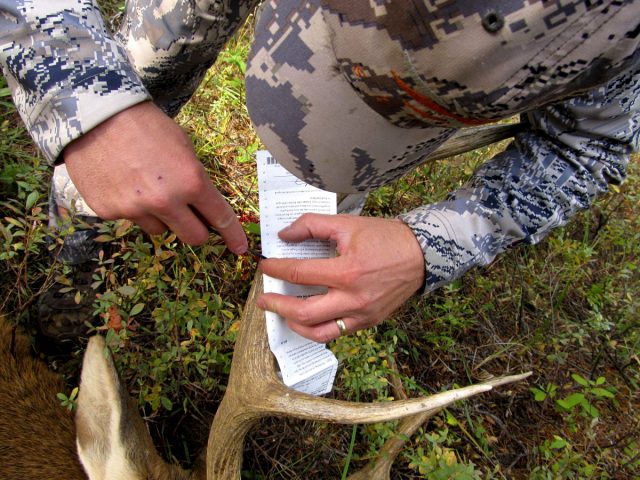 Once we ditched the notion of ‘not spooking’ the elk and got more aggressive, our success went up. I’ve heard veteran elk hunters say, “either kill em’ or run em’ off”, and there is a lot to this. Getting in as close to elk as possible and making things happen – instead of waiting for things to happen – has served us well. We get as close to a bull as possible, sometimes literally running to cut the distance, and then rake trees, grunt, mimic his responses, break branches – whatever it takes to get in tight and challenge the bull to come in and fight.
Once we ditched the notion of ‘not spooking’ the elk and got more aggressive, our success went up. I’ve heard veteran elk hunters say, “either kill em’ or run em’ off”, and there is a lot to this. Getting in as close to elk as possible and making things happen – instead of waiting for things to happen – has served us well. We get as close to a bull as possible, sometimes literally running to cut the distance, and then rake trees, grunt, mimic his responses, break branches – whatever it takes to get in tight and challenge the bull to come in and fight.
One morning this worked too well. We located a bull right at sun-up and bee-lined right to him. We set-up, cow called, and the bull bugled. Jeremy hammered him with a challenge bugle and the bull screamed back. The bull then came over and started raking a tree 30 yards from me. I came to full draw, but there was a bunch of brush in the way. Another bull came trotting in behind me. I turned around and that bull winded me and took off. The herd bull finished raking and stomped straight to Jeremy. I had no shot, but Jeremy came to full draw. Unfortunately, the bull didn’t offer him his vitals either. He didn’t stick around and it didn’t work out, BUT encounters like this have become more of a regular occurrence because we have become more aggressive in our tactics.
Learning
As I mentioned earlier, I WISH I could go back and hunt those first four years over again with the knowledge we have now. Those first 4 seasons we didn’t have a clue about elk behavior or elk hunting tactics. We often called when the wind was swirling. We would set up behind brush rather than in front. My knees would ache because on every setup we would start on our knees. When an elk would come in, we would move at the wrong times…the list goes on and on. We didn’t put in the time to learn our quarry or techniques prior to hunting them.
After that fourth season, we finally got serious and put in the time to learn about elk and elk hunting. I grabbed any book or magazine I could get my hands on. I scoured places like Elk101.com to read what successful hunters did. I met some very knowledgeable elk hunters online that were more than gracious enough to share their expertise. I even found random DVD’s showing elk behavior, and watched and learned a lot from those. I didn’t have time with work a young family to go and spend several weeks witnessing elk behavior for myself. From my studying, I picked out habits of elk, as well as some of the sounds they make. I became what my wife would call “neurotic” about elk. We even traveled to other states to attend elk hunting seminars to learn more.
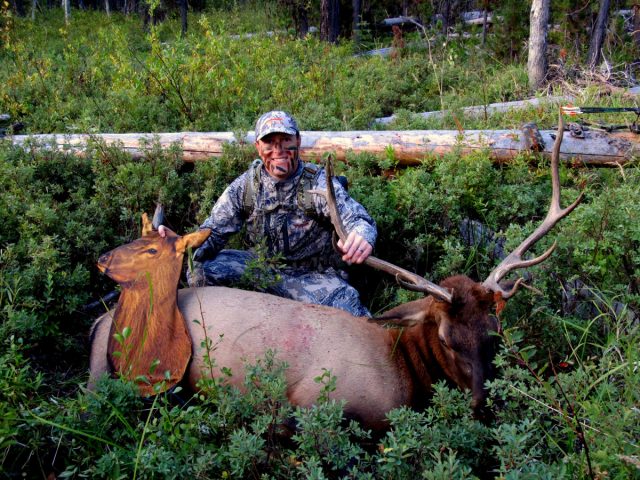
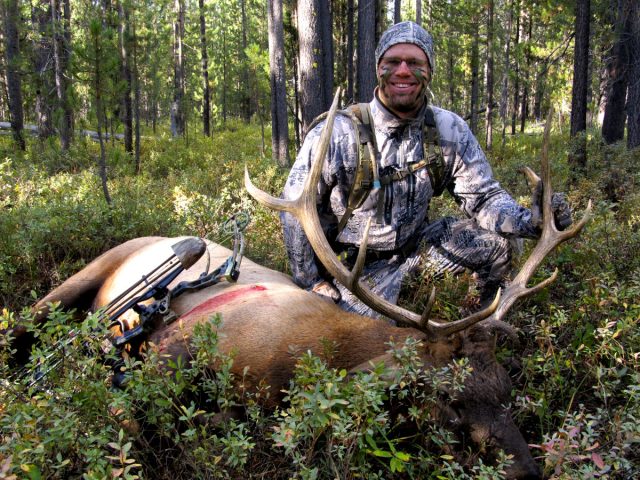
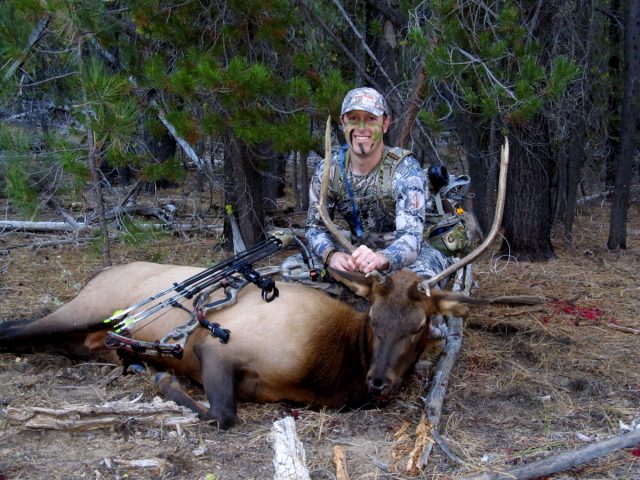
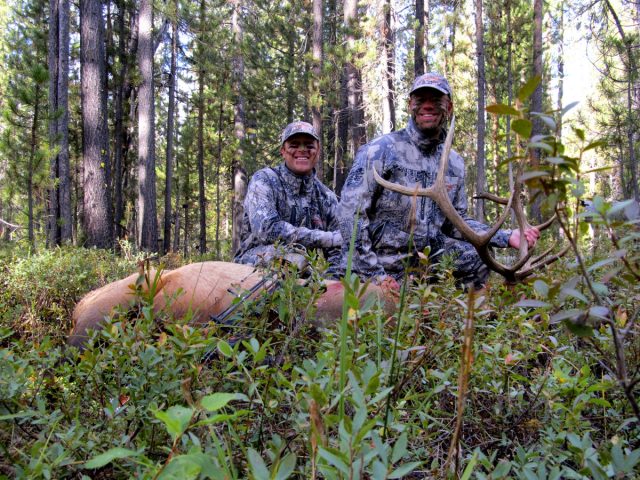
Learning about elk and elk behavior has probably led to our biggest successes. We learned the habits and behaviors of the elk in our areas. One year in particular, we used this to our advantage. We knew the elk were getting pressured from all sides of one particular drainage, so we figured out where they would likely retreat to. We knew their travel routes and got in ahead of the other hunters. Low and behold, at sun up we found ourselves in the middle of a rut-fest of screaming bulls. This was probably my best day in the elk woods so far. If we hadn’t put in the time and learned their habits, we would have missed out on one heck of a hunt.
I want to reiterate; we still have MUCH to learn! Ultimately, learning is a lifelong process. By no means do I feel I have things “figured out”. In fact, for the first time in the last four season, we didn’t fill our tags last fall. It’s a long story, but man, we got our rears handed to us. We didn’t even come to full draw all season! As frustrating as this was, I continue to be ‘neurotic’ about elk and elk hunting, and will be for the rest of my life. We were humbled last season for sure, but that lit a fire in us to get back to success. We are scouring new areas on Google Earth, and planning new adventures. We cannot wait for September to come so we can continue to learn and grow as elk hunters!
We greatly appreciate Clint taking the time to share his elk hunting journey with us! Clint also recently signed up for the University of Elk Hunting Online Course, and had this to say:
“As I was working through the modules, my wife asked me if it was good. My comment was, “I wish I had access to something like this when I first started out elk hunting!” But as I’ve gotten deeper into the modules, I’ve picked up things even a veteran elk hunter can glean from too. Corey has left no stone unturned with this project!” – Clint Radford
Be sure to check out the University of Elk Hunting Online Course and get signed up now at:
